Invertebrates comprise 95% of all animal species, and within such a variety it is normal to find some incredible species, either for their appearance or their abilities. Among all kinds of weird invertebrates, insects and mollusks stand out.
Weird insects
Panda ant
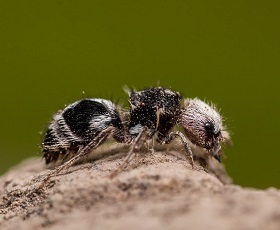
The panda ant (Euspinolia militaris) is a species of insect that attracts attention because of its appearance, similar to that of a panda bear.
Despite its name, it is not an ant, but a kind of wasp. In its adult stage, the panda ant feeds only on flower nectar, so it is a nectarivorous insect.
This species can be found in Chile and Argentina, mainly in the Andes Mountains. These weird insects inhabit dry tropical areas, such as the espinales. A curious characteristic of this species is that it parasitizes other similar insects. It is a very rare and difficult species to find, so it has not yet been studied in depth. However, it is currently known to be in danger of extinction.
Brazilian treehopper
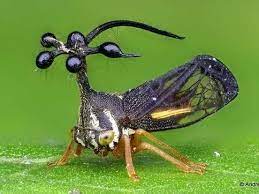
The brazilian treehopper (Bocydium globulare) is a strange insect that attracts attention because of its large horns.
This strange insect stands out for the protuberance that rises above its head: the trunk above its head branches at the crown into 5 appendages, 4 of them are short, end in a ball and are M-shaped, and the last appendage is elongated to the back of the body. In addition, it is a folivorous animal that feeds on leaf sap.
The brazilian treehopper inhabits humid and dense forests in the northern Amazon. At the moment, the conservation status of this species is unknown, this may be due to its small size and the difficulty of finding it in the dense forests where it lives.
Orchid Mantis
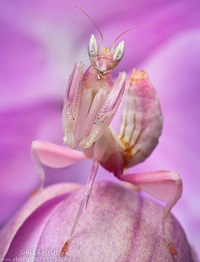
The orchid mantis (Hymenopus coronatus) is a beautifully colored insect with a great ability to camouflage itself.
Females are twice as large as males. These weird insects are pink and white in color and have petal-shaped leg lobes. This allows them to camouflage themselves in flowers to attack pollinating insects, such as bees or flies, by surprise.
This strange insect inhabits the rainforests of Malaysia, Indonesia and Sumatra. Like many other insects, some characteristics of this species, such as its conservation status, are unknown.
Atlas butterfly
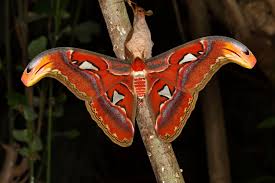
The Atlas butterfly(Attacus atlas) is the largest butterfly in the world.
This butterfly has a wingspan of 25 to 30 cm, and is mainly reddish brown in color. This strange insect has no mouth during its butterfly stage, so it can only feed during the caterpillar phase. During that time it only feeds on leaves.
The atlas butterfly inhabits tropical forests and secondary forests in central and southeast Asia (from Afghanistan to Indonesia). Its conservation status is unknown, but as an insect with a wide geographic distribution it is believed to be non-threatened.
Weird mollusks
Blue dragon
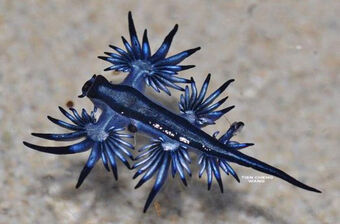
The blue dragon (Glaucus atlanticus) is a marine mollusk that is characterized by having a very strange appearance of an intense blue color.
One of the most striking features of the glaucus atlanticus is that it has a gas pocket in its stomach that helps it float upside down, thus avoiding leaving the surface of the water. In addition, its characteristic blue color helps it camouflage itself. These weird mollusks are carnivores, feeding on other mollusks and jellyfish. They mainly eat Portuguese dogfish
It is a species found in most of the world’s seas and oceans. The blue dragonfish inhabits temperate and tropical waters, in the open ocean. These weird invertebrates live in most of the seas and oceans and their population is very large, therefore it is considered a species of least concern.